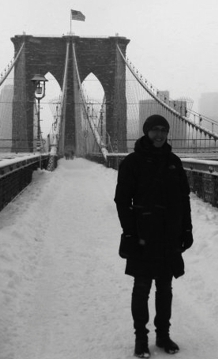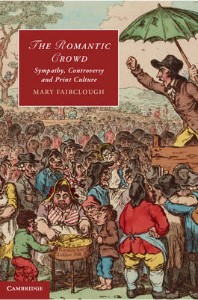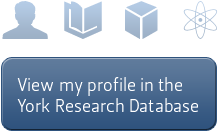Mary Fairclough
Visit Mary Fairclough's profile on the York Research Database to:
- See a full list of publications
- Browse activities and projects
- Explore connections, collaborators, related work and more
Profile
Biography
MA, PhD (York)
My research interests lie in the intersection between literature, politics and science in the long eighteenth-century. My first book is a study of the representation of crowds in the Romantic period and the way in which sympathy is understood as the catalyst of collective behaviour. I am currently working on a project on representations of electrical science in the eighteenth century, and the way that electrical metaphors are appropriated in a wide range of literary and political discourse.
I completed my MA and PhD at the Centre for Eighteenth Century Studies and Department of English and Related Literature at York. I previously taught in the Department of English Language and Literature at the University of Huddersfield.
Research
Overview
My first monograph The Romantic Crowd: Sympathy, Controversy and Print Culture (Cambridge University Press, 2013) explores understandings of sympathy in the late eighteenth- and early nineteenth-centuries. Sympathy is understood not just an emotional or imaginative phenomenon, but also as a physiological one, though which disorder in one part of the body is instantly communicated to another. Physiologists at this period even suggest that morbid symptoms might be communicated from one person to another through sympathetic communication. Such accounts of sympathy are frequently applied to the behaviour of crowds during the Romantic period. I explore how sympathy takes on particularly contested significance during the British debate over the French Revolution in the 1790s, and during mass demonstrations for parliamentary reform in the 1810s. I also investigate the ways in which writers like Mary Wollstonecraft, Helen Maria Williams, John Thelwall, William Hazlitt and Thomas De Quincey attempted to rehabilitate a language of sympathetic communication for their own political ends.
My second monograph Electrick Communication Every Where: Electricity, Literature and Politics 1740-1840 (Palgrave, 2017) investigates the science of electricity in the long eighteenth century and its textual life in literary and political writings. Electricity was celebrated as a symbol of enlightened progress, but its operation and its utility were unsettlingly obscure. As a result, debates about the nature of electricity dovetailed with discussions of the relation between body and soul, the nature of sexual attraction, the properties of revolutionary communication and the mysteries of vitality. This study explores the complex textual manifestations of electricity between 1740 and 1840, in which commentators describe it both as a material force and as a purely figurative one. The book analyses attempts by both elite and popular practitioners of electricity to elucidate the mysteries of electricity, and traces the figurative uses of electrical language in the works of writers including Mary Robinson, Edmund Burke, Erasmus Darwin, John Thelwall, Mary Shelley and Richard Carlile.
I have also published various articles on sympathetic communication, the politics of the picturesque, Romantic periodical print culture, the function of the optical telegraph, and the significance of the imagination in scientific discourse in the long eighteenth century, and would welcome enquiries from prospective students working in these areas.
Teaching
Undergraduate
At undergraduate level, I teach on the period and topic modules that cover the eighteenth century and Romantic period and offer a special module on the eighteenth-century culture of sensibility, Feeling the Eighteenth Century.
Postgraduate
I offer an MA module on representations of electricity in the long eighteenth century Literature, Science and Revolution: Electricity from Franklin to Frankenstein.

Contact details


